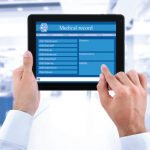As of Jan. 1, 2019, the Centers for Medicare & Medicaid Services (CMS) will implement several coding and documentation policies to provide immediate burden reduction to providers. The 2019 Medicare Physician Fee Schedule Final Rule (MPFS) released Nov. 1, 2018, by the CMS contained significant changes to the Medicare Part B coding and documentation policies to deliver on its pledge to prioritize patients over paperwork.
The ACR appreciates the CMS’ effort to work with the medical community and not move forward with its original proposal to collapse the payment of the evaluation and management (E/M) codes in 2019. As you know, the ACR was a leader among the specialties on the E/M consolidation issue; our efforts included helping facilitate a large provider/patient group letter and two Congressional letters that expressed concerns to the Trump administration, so we are especially glad to see the CMS seems to have listened. With the two-year window before implementing the January 2021 proposal to revisit collapsing the E/M codes, the ACR advocacy team will continue to work with our coalition partners to make recommendations on this complicated topic.
Key Medicare E/M Changes
For 2019 and 2020, the CMS has indicated it will continue to use the current coding rules and payment structure for E/M office/outpatient visits, so providers can continue to use either the 1995 or 1997 versions of the E/M guidelines to document new or established patient visits billed to Medicare. Below are the key changes rheumatology practices should take into consideration for documenting Medicare E/M services:
- For established patient office/outpatient visits, focus documentation of history and exam on what has changed since the last visit or on pertinent items that have not changed, rather than redocumenting information. Providers will still need to review and update the previous information;
- Providers will not need to rerecord the defined list of elements if there is evidence the information was previously reviewed and updated as needed;
- For E/M office/outpatient visits for new and established patients, practitioners will not need to re-enter information in the medical record of the patient’s chief complaint and history that was previously entered by ancillary staff or beneficiary; and
- Providers can choose to continue using the 1995 or 1997 E/M guidelines if doing so meets their practice needs.
Removing redundancy in E/M documentation is a key win in the CMS’s final rule because this can be a duplication of work in most practices. Especially for established patients, documenting information in the provider’s note, particularly with regard to history and exam, that is already present in the medical record should not be required. Currently, both the 1995 and 1997 guidelines provide such flexibility for certain parts of the history for established patients, stating: A review of systems (ROS) and/or a pertinent past, family and/or social history (PFSH) obtained during an earlier encounter does not need to be rerecorded if there is evidence the physician reviewed and updated the previous information.
ROS & PFSH Information & Guidelines
When describing any new ROS and/or PFSH information or making a note that there was no change in the information, providers should list the date and location of the earlier ROS and/or PFSH in their notes for that date of service. To document the provider reviewed the information, a notation supplementing or confirming the information recorded by others per the CMS’s Evaluation and Management Documentation Guidelines should be included.
Remember: Although rerecording certain elements is no longer necessary, providers will need to provide evidence the information was reviewed, make any necessary updates and indicate the work in the patient’s medical record for that date of service.
The key documentation guidelines practitioners need to remember when reviewing and updating the ROS and PFSH include:
- Describe any new ROS and/or PFSH information, or note the information has not changed; and
- Note the date and location of the earlier ROS and/or PFSH.
The ROS and/or PFSH may be recorded by ancillary staff or on a form completed by the patient. To document the physician reviewed the information, a notation supplementing or confirming the information recorded by others must be made.
Things to Keep in Mind
Keep in mind, the CMS has not eliminated the requirement to document any history, exam and/or medical decision making, but rather, it is working in response to feedback on eliminating unnecessary and outdated requirements associated with payment for the levels of E/M visits. The goal is for providers to document what is clinically relevant and medically necessary to support the service.
Although these guidelines are set by the CMS in policymaking, whether third-party payers will implement the same policy remains unknown, so practices must verify each payer’s billing guidelines—especially given that most Medicare patients have a secondary payer. Practices should continue applying best practices in coding and billing claims to minimize delays or denials.
The AMA/Current Procedural Terminology (CPT) Editorial Panel is currently working to revise the E/M code set by 2020 or 2021, which would help establish uniformity among payers. The ACR is involved in the meetings and monitoring the revision of each section of the E/M coding guidelines.
As always, providers should continue documenting substantial information in the medical record for clinical, legal and other policy purposes, such as risk adjustment, quality reporting, productivity measures and potentially for other payers. The ACR Practice Management Department continues to provide coding education for physician practices on state and national levels in an effort to assist members and their staff to understand the changes, get everyone trained and maintain the practice workflow for efficiency.
For More Information
For more information or questions on the CMS Final Rule, contact Kayla Amodeo, and for all coding questions, training and/or billing guidelines, contact Antanya Chung or [email protected].
NEW PATIENT
| S: A 55-year-old female patient with pain in multiple joints is referred to the office by her primary care physician. She complains of pain in both knees and both shoulders. She rates the pain at 7 on the pain scale. Her pain is worse at night after she gets off work. Soaking in her hot tub for about 45 minutes seems to reduce the pain to a 5 on a 10-point scale. She has taken acetaminophen, which does not help. She states she was unsteady on her feet a few times the previous week. She denies any weight gain or loss, dyspnea, dysuria, rashes, hair loss, dysphagia, stomach or abdominal symptoms, chest pain or mood changes. She has no known allergies. She has no other medical problems.
PMHX: Total hysterectomy five years earlier for benign problems. SocHX: She does not smoke or consume alcohol. Fam HX: Mother had rheumatoid arthritis. She passed away last year in a car accident. Her father passed away 10 years ago and had no rheumatic diseases. She has no siblings or children. |
§ Chief complaint and history obtained and documented by ancillary staff or beneficiary.
§ Provider must review and sign off. |
| O: Her temperature is 98.7°F, height 5’6″, weight is 160 lbs. and blood pressure is 125/75 sitting. Patient is alert and oriented. She is well groomed. Her heart is regular and lungs are clear. Tendon reflexes are normal in the lower extremities. Her gait and stance are normal, and she has full range of motion with no inflammation or tenderness. A slight effusion in both knees is noted. Her muscle strength and tone are good. She has Heberden’s nodes. | § Vital signs performed and documented by ancillary staff
§ ROS—provider
§ Exam—provider |
| A: Pain in right and left elbow. Pain in right and left knee.
|
§ Provider |
| P: Celecoxib 100 mg BID. X-ray of shoulders and knees. Recommend ROM and quad-strengthening exercises. See PCP if unsteadiness persists.
|
§ Provider |
ESTABLISHED PATIENT
| S: A 39-year-old woman returns for follow-up for her rheumatoid arthritis. She has positive rheumatoid factor, but no organ or systemic involvement. She has joint swelling and pain in her left hand, right elbow and right knee. Her pain is at an 8 on a 10-point scale. She states the pain is worse in the evening after completing her workday as a school bus driver. She is currently on methotrexate 25 mg weekly. Her condition is worsening. She had bronchitis six weeks before and still has a dry cough, but no fever or dyspnea. The patient denies nausea, rashes, chest pain, headaches or palpitations. She has no known allergies. She had a miscarriage three years ago. She recently returned from visiting relatives in Russia.
Fam HX: Her mother was diagnosed with rheumatoid arthritis 20 years ago, but has since passed away. |
§ Chief complaint and history can be obtained and documented by ancillary staff or beneficiary.
§ Provider must review and sign off. |
| O: The patient’s weight is 150 lbs., blood pressure is 106/74, and her temperature is 98.2°F. Her skin has no lesions or rashes. Her lungs have slight wheezing, but no rales or rhonchi; she is coughing. Her heart rate is regular. Her left wrist is warm to the touch, but she has full range of motion. Her right elbow lacks 5° of full extension and does not flex completely; it is swollen and warm. Her right knee has crepitus, tenderness on full flexion, slight warmth and moderate synovitis; it lacks 5° of both full extension and full flexion. Gait unsteady. | § Vital signs performed and documented by ancillary staff
§ ROS-Can be performed and documented by ancillary staff (reviewed by provider and sign-off)
§ Exam – provider |
| A: Rheumatoid arthritis in multiple joints, with positive rheumatoid factor, but no organ or system involvement. Coughing and wheezing with HX of recent bronchitis.
|
§ Provider |
| P: Tramadol 50mg (30) TID prn for pain. X-ray of chest and lungs. TB test ordered/performed. See PCP if cough unresolved. Begin infliximab infusion in two weeks | § Provider |


